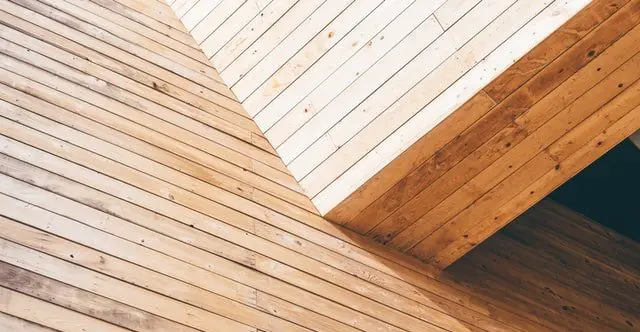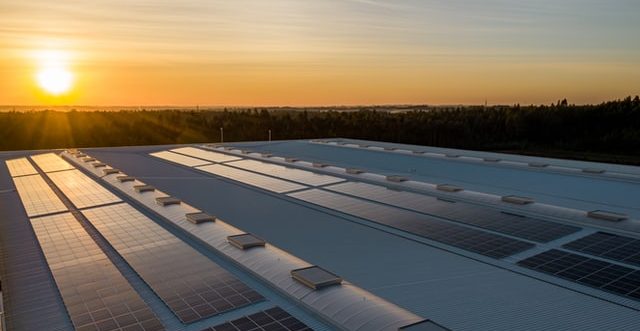Everyone can imagine that real estate affects the environment. Simply because it is located everywhere and is one of the largest industries in the world with a total value of more than $300 trillion. Local and national governments are imposing new rules on a regular basis to reduce the impact buildings have on the climate, nature and people. But is real estate really that bad for the environment?
How Does Real Estate Affect The Environment?
Real estate is responsible for more than 40% of the global energy consumption and more than 30% of greenhouse gas emissions. The operating phase of buildings consumes most of these resources for HVAC and lighting. Construction and demolition are responsible for energy consumption during the material production, large numbers of waste and pollution.

The Impact Of Real Estate On The Environment
The various phases of real estate affect the environment in many different ways. To identify its impact precisely, it is necessary to take a look at each stage of the building, from construction to demolition.
1. Construction
During the construction phase of a building, one of the biggest factors that impact the environment is the material being used. They are the most consumed raw materials worldwide and include sand, rocks, gravel, metals and wood. The production of building materials for the construction sector has accounted for about 11% of global energy and process-related emissions. Furthermore, research by the Global Alliance for Buildings and Construction has revealed that the construction sector is responsible for 5% of the total global energy consumption. In addition to the production of the materials, they must also be transported to the project site which, depending on the type of material, can account for another big part of energy usage.
Other factors that are directly linked to the construction phase are air-, water-. and noise-pollution. The first one occurs when lots of dust is developed from work on the land, as well as exhaust fumes from machinery and vehicles. Bad air quality can lead to various health conditions that are especially common in populated cities. These include coughs, shortness of breath, asthma, strokes and lung cancer. Secondly, water gets polluted by chemicals, paint, oil, diesel and other toxic liquids. The mentioned substances can either reach the groundwater or nearby rivers and lakes. As a result, this can lead to various diseases for people and can kill animals as well as plants. Lastly, the noise emitted by the construction work, machines and workers can affect the environment around the building site.
Another aspect of the construction sector, but more likely the whole real estate industry, is how natural habitats get destroyed when cities are growing. When not planned carefully, wildlife might end up in urban areas or in some extreme cases even go extinct.
2. Use-Phase
The use-phase plays a major role in how real estate affects the environment. When considering the complete lifecycle of a building, it takes up the longest period of time and therefore contributes significantly to energy consumption and emissions.
Residential properties use 64% of their energy for space heating, as well as around 15% for water heating. The other 21% of energy consumption are related to lighting, appliances such as washing machines and ovens, and other devices. Commercial buildings are relatively similar to residential houses. They use about 59% for Heating, Ventilation and Air Conditioning (HVAC) and 20% for lighting. Other energy consumption is related to office devices such as computers, printers, refrigerators and more.
In total, buildings account for 40% of the global energy consumption and more than 30% of greenhouse gas emissions.
Another way how real estate affects the environment is when maintenance is due. This part of the operating phase is similar to the construction period, as new parts must be produced, transported and installed in order to repair the building. With the help of modern technologies (which we will discuss in the following chapter) this problem can partially be eliminated.
3. Demolition
In the last phase of a building’s lifecycle it will get demolished to create space for new, modern properties. Even though nothing new is created at this moment, it still costs energy and resources to tear a building down.
The energy usage and greenhouse gas emissions for demolition are already included in the 5% global consumption mentioned in the paragraph about construction. The pollution is also similar to that of constructing a building, but most likely to a higher level. During the demolition of a building, large amounts of dust are being created which affect the air quality of surrounding areas. Furthermore, machines are emitting exhaust fumes. Lastly, another aspect that affects the environment is the loud noise from destroying walls and pieces falling on the ground.
An important difference to the construction phase is that much more waste is produced. In the UK for example, the waste produced from construction and demolition accounts for 59% of the total national waste. This statistic is similar to the US as well. Here 23% of total waste is related to buildings, of which more than 94% are related to demolition and only around 6% to construction. These numbers clearly show how important it is to embrace new recycling techniques and sustainable building materials that affect the environment less.
What Can Be Done To Reduce The Impact Of Real Estate On The Environment?
With an increasing number of sustainability regulations in the real estate industry, the pressure is increasing for developers to create greener buildings. Thanks to this high demand, new technologies and solutions are coming to the market continuously. Not only do these help to improve the impact of real estate on the environment but also make buildings more efficient and profitable. Thus the upcoming years will also be fairly interesting for investors and developers.
Sustainable Building Materials
One negative aspect of building materials is the consumption of energy and resources during their production. Therefore it is important to look at alternative types that are more sustainable. Green building materials include for example wood, bamboo, cork, timbercrete and many more. Some of these already find an increasing usage in modern construction, such as cross laminated timber.

Waste Management & Recycling
In order to improve the usage of resources, efficient waste management and recycling plans must be in place. This is particularly important for the demolition phase of buildings. In the UK, 89.9% of construction and demolition waste (CDW) is currently being reused for other infrastructure work such as roads. Concrete and bricks make up most of the recycled waste. Plastic, hazardous materials, and other CDW still contribute to a major part of the country’s landfills. Therefore, even though progress has been made with recycling and waste management, materials that are especially harmful to the environment (air- & water pollution) need to be reused more effectively.
Predictive Maintenance
One solution that helps to reduce the costs and resources used for maintenance in buildings, is to predict a problem before it is occuring. There are hundreds of different appliances and systems in modern commercial or residential properties that could potentially break down, including HVAC systems, elevators, lighting, security and access systems, different types of pipes, and many more. Malfunctions of these can have a drastic impact on the building and tenants, thus repairing them has often a high priority. These unexpected events are often related to high costs and require energy as well as resources to produce and install new components.
In order to reduce these factors, predictive maintenance can identify the problem before it occurs. Data is collected by sensors in all of the mentioned devices, then analyzed and monitored. If any unusual behavior is detected, the flaw can be repaired before it creates more significant damage. Consequently, these tools are reducing costs, the environmental impact of real estate maintenance and are making buildings safer.
Smart Building Systems & Technologies
Another way how data can benefit the way real estate affects the environment is by using smart building systems and technologies. Similar to predictive maintenance, the Internet of Things (IoT) enables devices to send information to a centralized management system that can analyze it. This data is then used to find patterns in the consumption of different resources and energy to make them more efficient.
Certain systems such as smart HVAC and smart lighting allow for energy savings of up to 50%. Not only will this drastically reduce energy consumption and emissions, but it will also positively impact operating costs of a building.
Renewable Energy
Lastly, to make real estate truly sustainable, the energy that is being used must be renewable. This can be achieved if the country itself is able to generate enough of it to power all the buildings, but a more effective and realistic way is that properties produce their own as well. With an increasing demand for solutions such as solar panels, their initial costs are slowly decreasing. This makes it a more attractive investment to choose than 5 or 10 years ago.
Not only will onsite energy sources reduce the overall operating costs, some buildings become so efficient that they produce more electricity than they need. These so-called energy-positive buildings can generate additional revenue for the property owner by selling back parts of this resource to the public grid.

Conclusion
Real Estate affects the environment to a large extent and plays a major role in global energy consumption, as well as, greenhouse gas emissions. In particular the operating phase of buildings consumes many resources, while the construction and demolition phase create large numbers of waste and pollution. New solutions and technologies are already being implemented and have shown to be successful, for example, recycling. On the other hand, there is still a long way to go for real estate to become truly sustainable and reduce its impact on the environment. Some promising technologies that can help with that are smart buildings that utilize data to become more efficient and the implementation of onsite renewable energy sources.
If you want to learn more about sustainable real estate, smart buildings & cities, as well as PropTech, feel free to take a look at our other articles.
